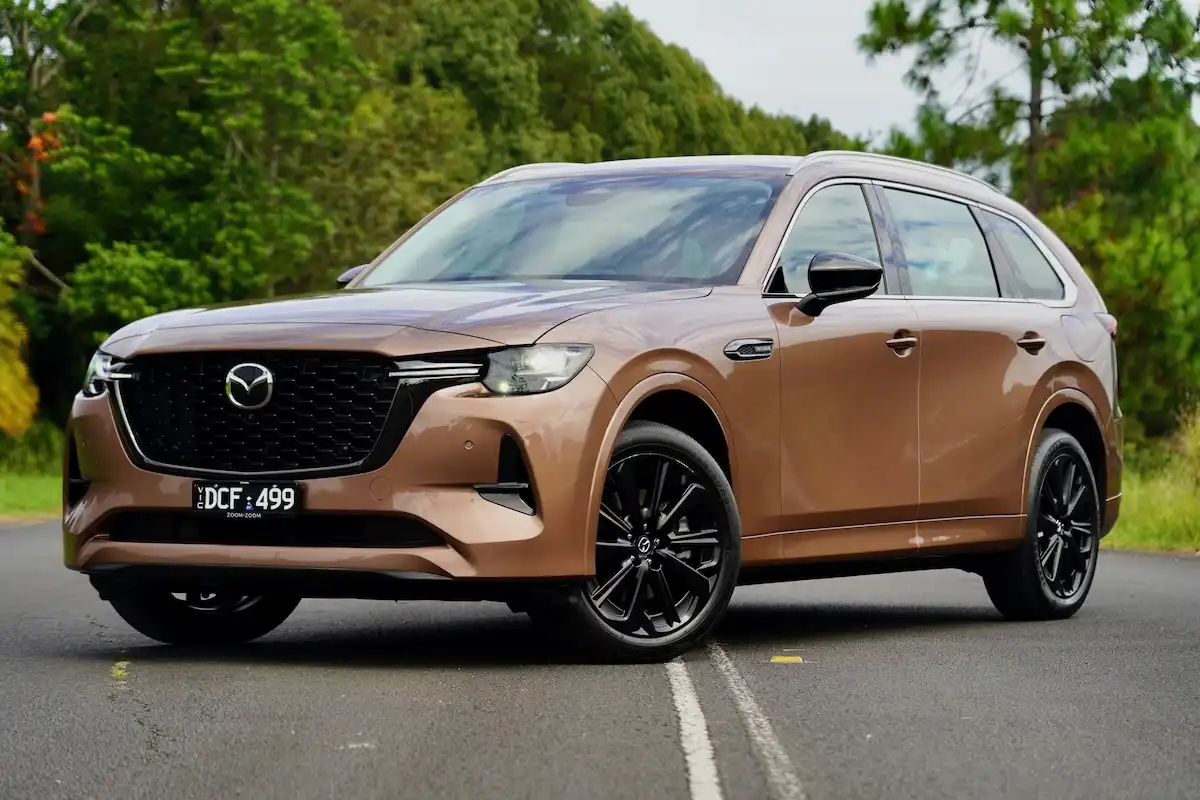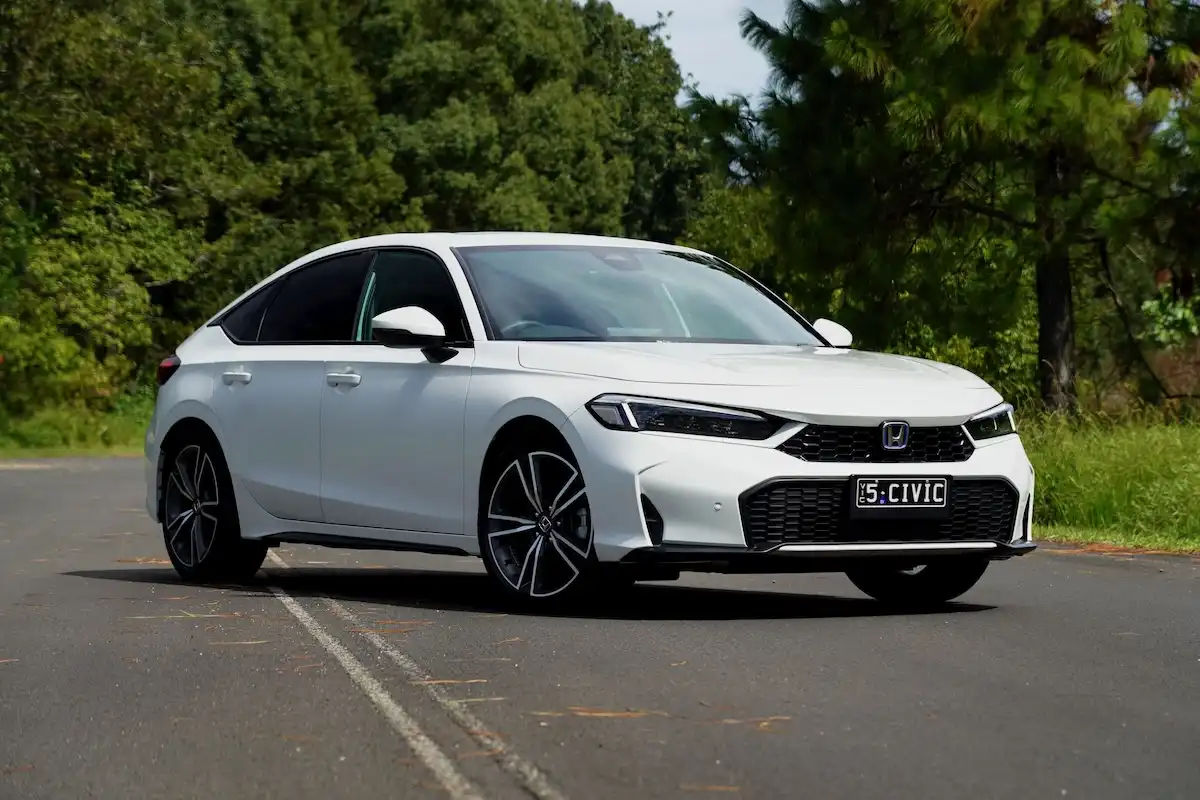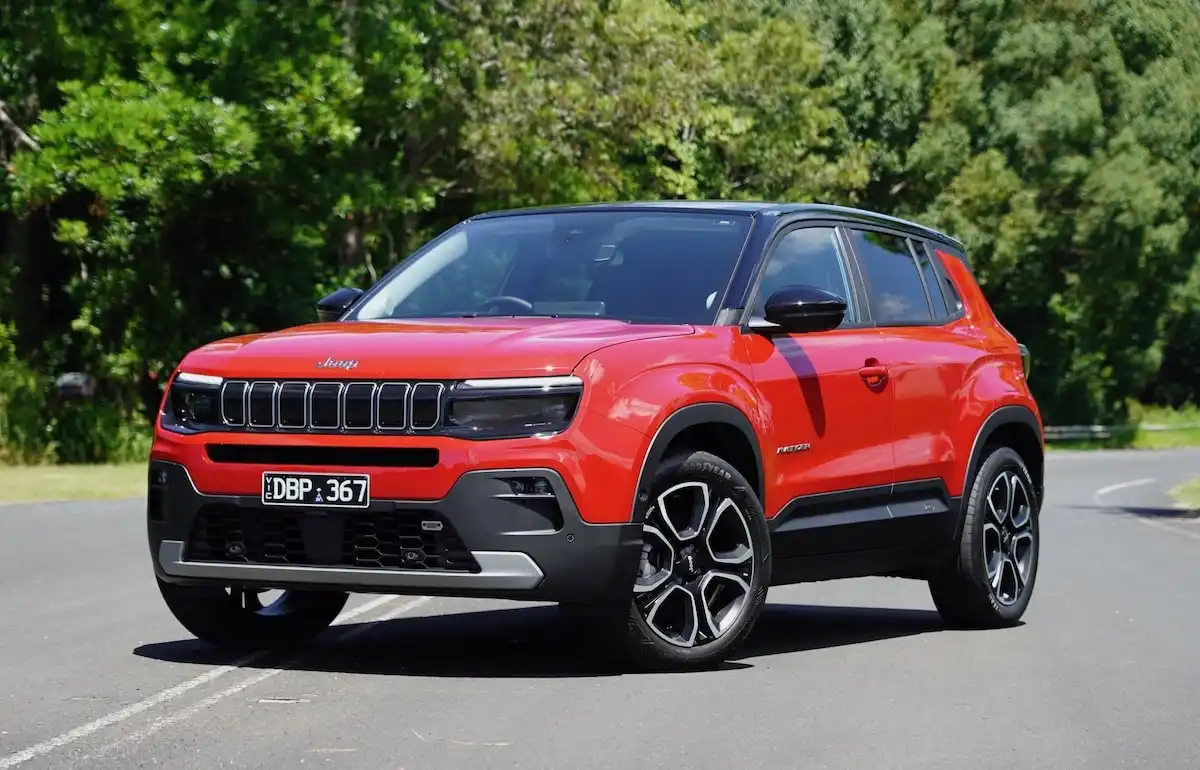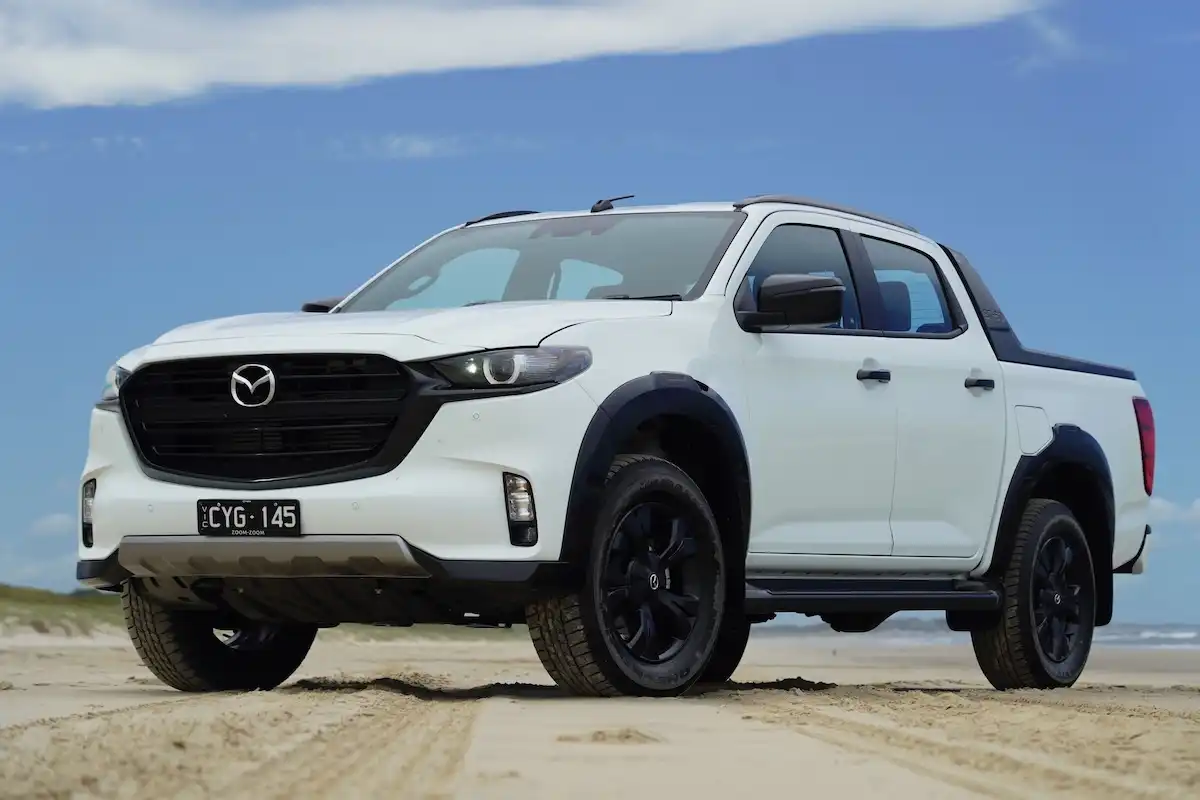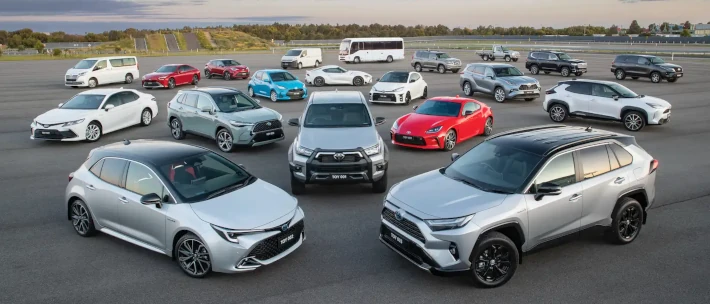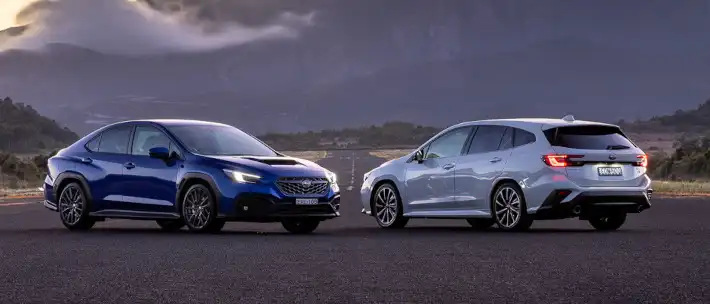While the basics of fuel efficiency are relatively easy to obtain for manufacturers, it’s more problematic when you’re tasked with creating a tough, powerful and large platform that meets our high expectations as a workhorse while juggling fuel-efficiency obligations.
Thankfully, some manufacturers have continued to perfect their recipe and have created a lineup of no-sacrifices utes that perform well on the road and worksite alike while helping to reduce fuel costs over time.
Need help narrowing down your choices?
Get in touch with one of our Car Buying Specialists today
Request a quoteLet’s take a look at ten of your best options within the fuel-efficient ute lineup here in Australia by focusing on the most popular single cab utes as a benchmark for fuel efficiency.
1. Ford Ranger

When you think about it, all the things that make a ute great for the worksite and off-road driving also increase its fuel use.
Thankfully, this was obviously a concern for Ford when designing its latest-generation Ranger lineup, which returns some impressive fuel economy figures when you consider its sheer power, towing and off-road abilities.
Across its range of four engine options in total, the base XL variant comes powered by a 2.0-litre turbo-diesel unit producing 125kW of power and 405Nm of torque, which results in 3,500kg of braked towing capacity.
Fuel economy is yet to be officially confirmed by Ford for the next-gen Ranger lineup, however, we do know that Ford has rated the base engine at 7.6L/100km on a combined cycle, which drops to 6.9L/100km in the 2.0-litre bi-turbo diesel variant.
2. Isuzu D-Max

Isuzu’s almighty D-Max range has fast become a fan favourite for Australian buyers, and in its latest generation, has introduced a new turbo-diesel engine as its entry-level powertrain.
The 1.9-litre turbo-diesel unit powering the entry-level lineup kicks up 110kW of power and 350Nm of torque, which sees its braked towing capacity capped at 2,800 and 3,000kg respectively for the manual and automatic variants.
Fuel economy for the base model engine sits at 7.0L per 100km on a combined cycle.
There is also a more powerful 3.0-litre turbo-diesel engine offered on the majority of the D-Max which increases its towing capacity to 3,500kg, which returns a combined cycle fuel economy figure of between 7.7-8.0L per 100km, depending on which model you’re opting for.
3. Nissan Navara

Nissan’s versatile Navara lineup offers a single cab, king cab and dual-cab lineup for Australian buyers, which is powered by two engine options.
The base models receive a 2.3-litre turbo-diesel unit producing 120kW of power and 403Nm of torque, while the rest of the range receives a twin-turbo diesel four-cylinder producing 140kW of power and 450Nm of torque.
Fuel economy figures stand at 7.2L per 100km for the single turbo diesel unit, while the twin-turbo diesel is rated at 8.1L per 100km on a combined cycle.
4. Toyota HiLux

Perhaps the most famous name in the Australian ute landscape, the Toyota HiLux is available here in single cab chassis, extra cab and double cab configurations with a choice of 4x2 and 4x4 platforms.
Power is supplied by a petrol engine alongside pair of turbo-diesel units, with the base models receiving a 2.7-litre four-cylinder petrol producing 122kW of power and 245Nm of torque, while the base diesel produces 110kW/400Nm from a 2.4-litre turbo-diesel unit.
Fuel economy for the entry-level petrol HiLux stands between 7.1-8.0L per 100km, depending on your variant and option of 4x2 or 4x4 platforms, while the base model diesel returns figures of 7.4L per 100km.
Toyota’s flagship engine, the 2.8-litre turbo-diesel producing 150kW of power and 500Nm of torque returns fuel efficiency figures of between 7.1-8.1L per 100km on a combined cycle.
5. Mazda BT-50

Mazda has joined the likes of Isuzu with the introduction of a new, smaller capacity turbo-diesel four-cylinder at the base of its range which produces 110kW of power and 350Nm of torque.
It sits alongside the flagship 3.0-litre turbo-diesel four-cylinder powering the majority of the BT-50 lineup which throws out 140kW of power and 450Nm of torque which increases the braked towing capacity figure from 3,00kg in the base model up to 3,500kg.
Mazda’s 1.9-litre turbo-diesel unit is rated at 7.0L/100km on a combined cycle, making it one of the most fuel-efficient utes available in Australia, while the more powerful 3.0-litre turbo-diesel unit is rated at between 7.7-8.0L/100km.
6. Mitsubishi Triton

Mitsubishi has taken a similar approach to other manufacturers with a smaller capacity engine at the base of its range, however, the 2.4-litre petrol unit powering the entry-level GLX Single Cab chassis has to work pretty hard to keep up with demand.
As a result, Mitsubishi’s entry-point into the Triton range returns unimpressive fuel economy figures of 11.4L/100km on a combined cycle, making the 2.4-litre turbo-diesel unit powering the majority of the Triton range by far the best option for both power figures and fuel efficiency.
The powertrain kicks up 133kW of power and 430Nm of torque while returning fuel economy figures of between 7.8L per 100km in the single cab manual, which increase to 8.4L per 100km in the Triton dual cab.
7. Volkswagen Amarok

The Amarok range comes powered by a pair of turbo-diesel engines, with the entry-level TDI400 receiving a 2.0-litre turbo-diesel producing 132kW of power and 400Nm of torque, which increases to 420Nm of torque in the TDI420.
This engine is rated at 8.4L per 100km in the form of the TDI400, which increases to 8.9L/100km in the TDI420.
Opting for Volkswagen's more powerful 3.0-litre turbo-diesel increases power to 165kW/500Nm in the TDI500, while the TDI550 produces 165kW and 550Nm from a revised version of the engine.
These powertrains are rated between 9.1-9.7L per 100km on a combined cycle, which positions them on the thirstier side of the ute fuel economy spectrum, however, the Amarok is available only as a dual-cab platform whereas some of its rivals have their fuel economy measured by a lightweight single cab chassis variant.
8. GWM Ute Canon

Introduced to the Australian market as one of the most affordable dual-cab utes on the market, the GWM Ute Cannon has recently received a new five-star ANCAP safety rating to increase its appeal Down Under.
The range is powered by a single engine, which comes in the form of a 2.0-litre turbo-diesel unit producing 120kW of power and 400Nm of torque, which is paired with an eight-speed automatic transmission and full-time four-wheel drive system.
Braked towing capacity is capped at 3,000kg, while the 4x2 variant’s fuel economy figure stands at 8.3L per 100km. Opting for the four-wheel drive variant increases fuel use to 9.4L per 100km.
9. Toyota 70 Series

While it might not be the most popular variant in the lineup, Toyota’s 70 Series ute remains an Aussie hero for those looking for a powerful, tough and dependable platform that isn’t afraid to get its toes dirty.
It’s powered by a 4.5-litre turbo-diesel V8 unit that produces 151kW of power and 430Nm of torque which is paired with a five-speed manual transmission.
All that power does, however, come at the expense of fuel economy, with the 70 Series returning less-than-stellar figures when it comes to fuel efficiency. Officially, the 70 Series is rated at 10.7L per 100km.
10. RAM 1500

The last entrant on our list is more of a compare and contrast exercise for fuel efficiency, because at its heart, the RAM 1500 is powered by a massive 5.7-litre Hemi V8 petrol that produces a massive 291kW of power and 556Nm of torque and makes its competitors look like athletes when it comes to fuel efficiency.
In spite of the new 48-volt ‘eTorque’ mild hybrid and stop/start system with cylinder deactivation, the RAM 1500 returns a thirsty fuel economy score of 12.2L per 100km on a combined cycle, which shows you just how much of a difference a turbo-diesel powertrain can make in a ute when it comes to fuel efficiency.
Request a Free Quote
If our list has got your imagination running, click here to get a free quote on your dream car, or to get in contact with our team of car-buying experts.

